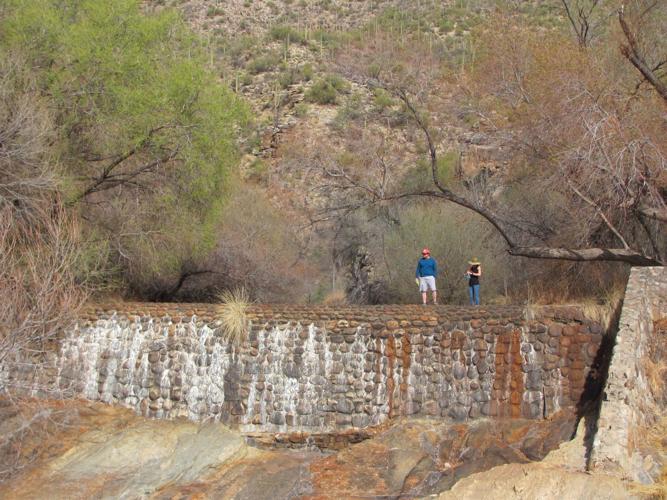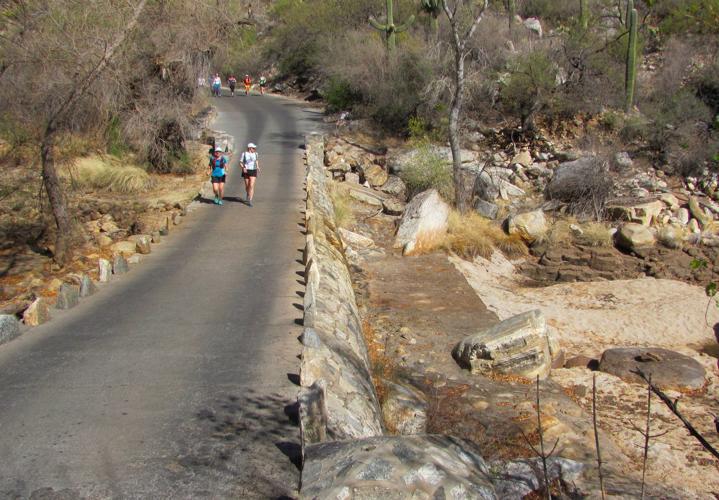Rainfall over the past two days has worked wonders for drought-stricken Sabino Creek — producing a measurable creek flow on Thursday morning for the first time in 153 consecutive days.
“Our gauge began reporting flow at 10 a.m. Thursday,” said Emmet McGuire, field office chief with the Arizona Water Science Center of the U.S. Geological Survey. “At 11:15 a.m., the reported flow was 347 cubic feet per second” at the gauge site near Sabino Dam.
That ranks as a hearty flow compared to some previous flow rates in the creek.
“This flow event ends the 153-day no-flow period of time and there should be flow in the creek for some time in the immediate future,” McGuire said.
The no-flow period wasn’t much shy of the longest dry period on record at the creek — 165 days that ended in March 2006.
The return of flowing water is happy news for many visitors because the creek is one of the most popular features of Sabino Canyon northeast of Tucson.
RESTORING THE FLOW
The reason for the extended lack of flow on the creek was no mystery: Southern Arizona has had scant moisture in recent months.
What was needed to get it flowing again was a bit harder to gauge before this week’s rains arrived.
“I usually don’t start getting excited until I actually see a front come through,” McGuire said.
If a weather system does move in, he starts making calculations.
“Generally, this is what I look for when I’m watching storm results so I can determine whether or not to send somebody out to make a measurement,” McGuire said. “I like to see at least 0.75 of an inch of rain upstream from a gauge. When I see values of three-quarters of an inch in multiple gauges, I’m starting to look for a flow event downstream.
“If I see an inch, I’m going to expect some flow,” he said.
Tucson had received 1.31 inches of rain out of the current weather front as of Thursday afternoon, according to the National Weather Service.
David Lazaroff, author of “Sabino Canyon: The Life of a Southwestern Oasis,” said that long dry periods don’t mean there is no moisture in the area.
“A mostly dry stream bed may not be the stuff of postcard photography, but it’s important to realize that even at times like these, when the stream gauge reads zero, Sabino Creek is still flowing, weakly, under the sand,” he said. “This keeps stream-side trees alive, though many suffer during the most severe droughts. Fish hang on in the few remaining pools, then spread up and down the canyon when visible flow resumes.”






